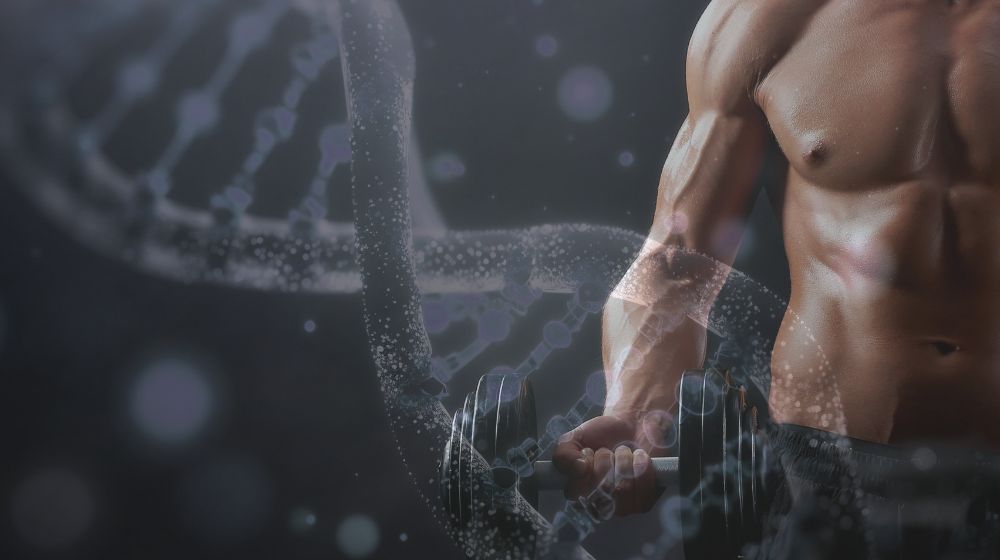So, Testosterone Replacement Therapy (TRT) on Gynecomastia concerns you, right? Don’t worry! Read this blog carefully, we will answer all your queries.
Gynecomastia, the enlargement of breast tissue in males, can cause significant discomfort and psychological distress. It often results from hormone imbalances, particularly involving testosterone and estrogen levels.
TRT or Testosterone Replacement Therapy, while beneficial for addressing low T levels, can inadvertently lead to Gynecomastia if not carefully managed.
So, before considering TRT treatment, individuals need to understand its impact and how to improve overall health and well-being.
What is Gynecomastia?
The male body naturally produces both testosterone and estrogen. When a man’s testosterone levels decrease significantly in relation to estrogen, or when estrogen activity suppresses that of testosterone, it can lead to the development of enlarged breasts.
During puberty, hormonal shifts may trigger gynecomastia, a condition where breast tissue forms. In many cases, this resolves on its own over time without intervention. The excess tissue can be symmetrically distributed between both breasts or unevenly concentrated in one.
As men age and testosterone levels decline, gynecomastia may persist unless treated. According to the Mayo Clinic report, approximately 1 in 4 men aged 50 to 80 are affected by gynecomastia. While generally not harmful, it can sometimes cause discomfort or tenderness in the breast tissue.
Symptoms of Gynecomastia:
Gynecomastia can lead to several symptoms, including:
- Swollen breast tissue
- Increased sensitivity of the nipples, particularly when in contact with clothing
- Nipple discharge from one or both breasts
- Fever and chills
What is TRT?
Testosterone Replacement Therapy (TRT) is a medical treatment used to treat men whose testosterone levels are deficient or unbalanced. This therapy is primarily used to address symptoms of hypogonadism, a condition where the body doesn’t produce enough testosterone. Common symptoms include fatigue, reduced libido, depression, and loss of muscle mass.
Other conditions treated include andropause (age-related testosterone decline) and specific cases of erectile dysfunction.
TRT can be administered through various methods, including injections (intramuscular or subcutaneous), transdermal patches, topical gels, and buccal tablets. Each method has its own advantages, tailored to fit the patient’s lifestyle and medical needs.
Check out this blog on What Are the Effects When You Stop TRT Therapy?.
What is the Link Between TRT and Gynecomastia?
The link between Testosterone Replacement Therapy (TRT) and gynecomastia lies in the body’s hormone balance. When undergoing TRT, increased testosterone can convert into estrogen through a process called aromatization.
Elevated estrogen levels can stimulate breast tissue growth, leading to gynecomastia, a condition characterized by the enlargement of male breast tissue. This hormonal imbalance, particularly the ratio of estrogen to testosterone, plays a crucial role in developing gynecomastia.
Research indicates that TRT treatment can induce this condition in some individuals. For instance, studies have shown that men receiving TRT might experience an increase in estrogen levels, subsequently developing gynecomastia. Clinical observations and case studies support these findings, highlighting the need for careful monitoring and management of hormone levels during TRT.
Check out this blog on Does Testosterone Replacement Therapy Cause High Blood Pressure?.
How to Prevent Gynecomastia When You’re on TRT?
Treating your gynecomastia issue during Testosterone Replacement Therapy (TRT) involves careful monitoring and proactive strategies.
Regular hormone level checks are crucial to ensure a balanced testosterone to estrogen ratio, helping to detect early signs of gynecomastia. Adjusting TRT dosage can minimize the risk by preventing excessive testosterone conversion to estrogen.
Lifestyle changes, such as maintaining a healthy diet and regular exercise, can also support hormonal balance and reduce gynecomastia risk.
Medical interventions may be necessary for some individuals. Aromatase inhibitors can block the conversion of testosterone to estrogen, while selective estrogen receptor modulators (SERMs) can prevent estrogen from affecting breast tissue.
Combining these approaches ensures a comprehensive strategy to manage and prevent gynecomastia during TRT, enhancing treatment efficacy and patient comfort.
Check out this blog on Is Testosterone Replacement Therapy (TRT) for Men Safe?
TRT on Gynecomastia Treatment: Is This Useful?
TRT or Testosterone Replacement Therapy can effectively address your body’s low T level, providing benefits like enhanced muscle mass, bone density, libido, mood and energy.
Typically, testosterone helps to prevent abnormal male breast tissue growth. However, fluctuations or significant decreases in testosterone can create a hormonal imbalance, potentially leading to gynecomastia and breast tissue enlargement.
So, to minimize the risk of developing gynecomastia, it is crucial to monitor hormone levels through regular blood tests. This allows your doctor to adjust your testosterone dosage as needed.
The Bottom Line
While Testosterone Replacement Therapy (TRT) can significantly improve the quality of life for men with low T, it also carries the risk of gynecomastia due to the potential increase in estrogen levels. Therefore, understanding this risk and implementing effective management strategies is crucial.
Regular monitoring of hormone levels, adjusting dosages, and incorporating lifestyle changes can help mitigate this side effect. Medical interventions, such as aromatase inhibitors and selective estrogen receptor modulators, offer additional protection against gynecomastia.
We, Precision TeleMed, are here to provide comprehensive TRT therapy with a focus on minimizing risks like gynecomastia. Our tailored treatment plans include online consultation and personalized medication to maintain optimal hormone balance. Patient well-being is our top-most priority. So, we strive to deliver TRT that enhances health without compromising comfort.




